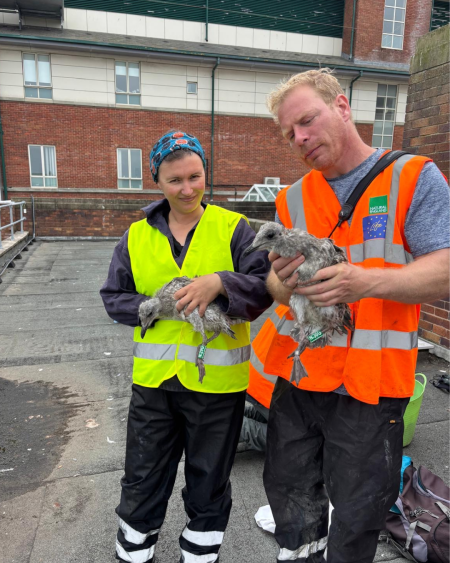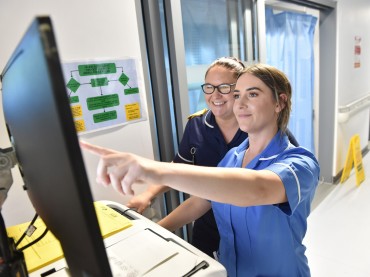Publish date: 16 July 2025

Birds like herring gulls are well-adapted to living alongside people – but they are doing far less well in their traditional habitats.
Andrew Holt, from Blackpool Teaching Hospital’s facilities and property subsidiary Atlas, said: “We work closely with Natural England to sustainably manage the gulls at Blackpool Victoria Hospital, which is necessary for public safety. The ringing project helps as part of our long-term plan to encourage the birds away from hospital.”
Since 2018, Natural England has been working to understand them better with the long-term aim of reducing conflict between people and gulls while supporting their recovery at the places they traditionally live. Bird ringing is the process of attaching a small, uniquely numbered metal or plastic ring to a bird's leg for identification purposes. This practice allows researchers to track individual birds, gather data on their movements, survival rates, and breeding patterns, which is crucial for understanding bird populations and informing conservation efforts.
Senior Specialist Ornithologist Bart Donato said: “Most of this work has focused to date on the rural nesting colonies but we’ve extended on to urban sites. That’s why you may see gulls around Blackpool Victoria Hospital now with green leg rings with a four-character code on them.
“Through people spotting and reporting these coloured rings we can start to understand the life-choices made by individual birds and learn more about how they spend their time.”
Sighting of the birds can be reported at the North West England Gull Project website where individual histories are also available.



